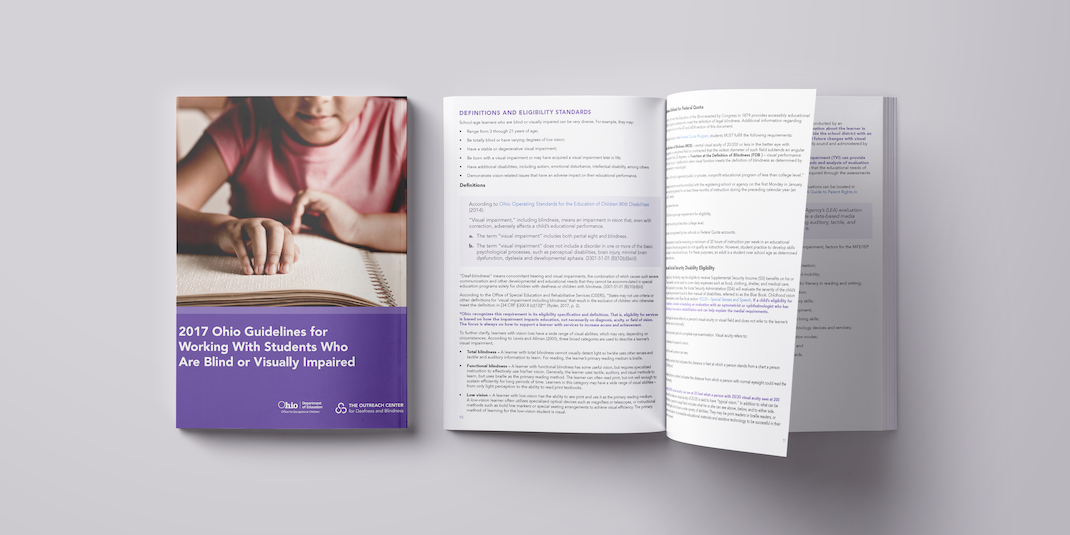MedEd Connections Resource Guide: Blind and Visually Impaired (B/VI)
How Could My Child Become Eligible for Special Education Services?

There is a very prescribed process for your child to be evaluated for eligibility for special education services. The Individuals with Disabilities Education Improvement Act (IDEA 2004) governs the rules for special education and each state interprets those rules and develops processes and procedures. In Ohio, a team evaluates students for special education eligibility. This group of professionals, along with you as a parent, contribute information to help best describe your child’s strengths and challenges and help determine if your child needs specialized instruction and supports and services to access and engage in education. The evaluation is a process that brings together lots of data about your child to determine eligibility for special education services. The team considers a variety of assessment data and gathers relevant functional, developmental, and academic information about the child, including information provided by the parent. The purpose for this evaluation is to determine eligibility for services and to inform educational planning and instruction.
For your child to qualify for special education services in the category of blindness or visual impairment, the ETR will have to indicate that your child is blind or visually impaired(B/VI) with strong evidence that their vision condition negatively impacts their access to education. This data and documentation might include:
- a medical diagnosis;
- the results of medical and/or vision examination;
- documents from early intervention services;
- school assignments; and
- correspondence with your child’s teacher documenting the strategies used to address learning challenges.
When school personnel perform the evaluation for your child, results are documented in an Evaluation Team Report (ETR), which will indicate if a student is or is not eligible for special education and related services. The ETR is very important; it contains the information used to determine your child’s needs and services, including strengths and areas of challenge. Once eligibility is determined, the development of the special education program can begin. The ETR is reviewed at least every three years for those who are eligible.
Additionally, your school team may want to know about assessments and evaluations specifically designed for students who are B/VI. Consider sharing the following guidelines with your child’s IEP team: 2017 Ohio Guidelines for Working With Students Who Are Blind or Visually Impaired.